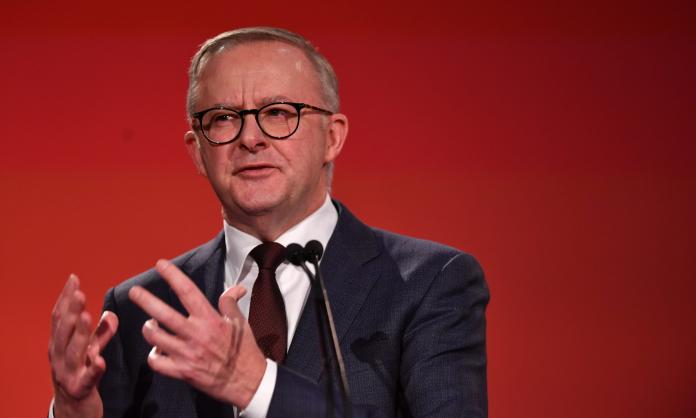If you want a model of a society that puts profits before people, Australia at the moment wouldn’t be a bad place to start. Matt Grudnoff, senior economist at the Australia Institute, last month described the recent collapse in living standards as “the biggest destruction of real wages in Australia since records began”. The Reserve Bank said that the declines could go on, month after month, until the end of 2023. Yet the newly elected “party of labour” is hardly lifting a finger to address it.
The federal government has asked the Fair Work Commission to increase the minimum wage by last year’s rate of inflation, 5.1 percent, because, it says, the ALP doesn’t want poor people to go backwards. This is a sleight of hand. Workers already went backwards over the last twelve months by an average of $2,000, according to the Australian Council of Trade Unions. They are not going to be compensated for that.
The government’s 5.1 percent wage rise ask is for next year, presumably to stop people going backwards again. But Diana Mousina, AMP senior economist, says that inflation could get close to 7 percent in the coming months; and the RBA now says that it could even surpass that heading into 2023. So 5.1 percent will not be enough to prevent another year of real wage cuts being imposed on the lowest paid workers. And that’s assuming Fair Work grants even that paltry nominal wage rise.
All major employer association submissions to the commission call for a substantially lower increase to the minimum wage. Why wouldn’t they? It’s simple class war: transfer wealth from workers to capitalists. Every day that consumer price inflation is higher than wages growth is a day that the bosses are making workers pay for the cost of doing business.
At the moment, there is possibly no section of the workforce that is going forward. The country’s 1.7 million state public servants are also getting smashed, many of them against wage caps of 1.5 or 2.5 percent imposed by state Labor governments.
Inflation is a scourge to workers only if wages aren’t keeping pace, but financiers consider high inflation diabolical simply because it is the process of money being devalued. And those with large amounts of cash, such as banks, are affected disproportionately by higher inflation because their stores of wealth decrease more rapidly than usual. That’s the primary reason the Reserve Bank has a “target” inflation rate of no more than 3 percent—to protect big finance.
Inflation also reduces the value of the debts owed to banks. Their fundamental defence against this is the interest rate on the loans they issue. Basically, banks compensate for rising inflation by squeezing more out of the people who owe them money. In Australia, that’s primarily workers and small business owners. The banks’ combined mortgage balance sheet, for example, is close to $3 trillion.
When the Reserve Bank board in its last two monthly meetings voted to increase interest rates by 0.75 percent, it did so primarily, not to help deal with rising consumer prices, which are the result of international shocks, but to make sure that mortgage holders don’t benefit at the banks’ expense, from any possible decline in the real value of their debt.
The current cash rate is 0.85 percent, but it’s projected to almost triple by early next year. And the increases are being passed on by the commercial banks, whose variable rates for homebuyers are now more than 5 percent. The result is mortgage repayments being driven up by hundreds of dollars a month, and likely flowing on to further increases in rents, which are up more than 9 percent over the last year across the country, according to PropTrack, a data analytics firm.
Again, it’s capitalists finding a way to make workers pay for the system’s problems.
The power crisis is now also about to bite even though Australia has some of the largest energy reserves in the world. Thousands have been hit with a doubling of their power bills. Millions more will be hit in the next months as prices increase by hundreds of dollars a year per household.
It’s not because the cost of producing electricity has suddenly increased. It’s because almost all of the energy grid, and the resources used to feed it, has been privatised, linked to international markets and run to profit large corporations.
Gas exporters are reaping windfall profits due to global disruptions, while the prices are passed on to consumers here, who in theory are the owners of the gas. It’s a giant scam enriching the fossil fuel capitalists to the detriment of working-class living standards.
The people running the ALP are not stupid. They know that the government could do any number of things to stop capitalists in various industries from driving working-class living standards down. It could impose retail price caps and mortgage repayment caps. It could change the industrial laws to prevent wage cuts. It could secure the energy resources and put the power grid back into public hands.
Doing any of these things would require a perspective that people should come before profits. It would require a fight against big business interests. But Labor is in the pocket of the capitalists. That’s why it is doing next to nothing to stop this “class war from above”.
A fightback against the destruction of living standards has to be organised from the ground up, by workers, students and pensioners. If we don’t fight, we will continue to lose.








